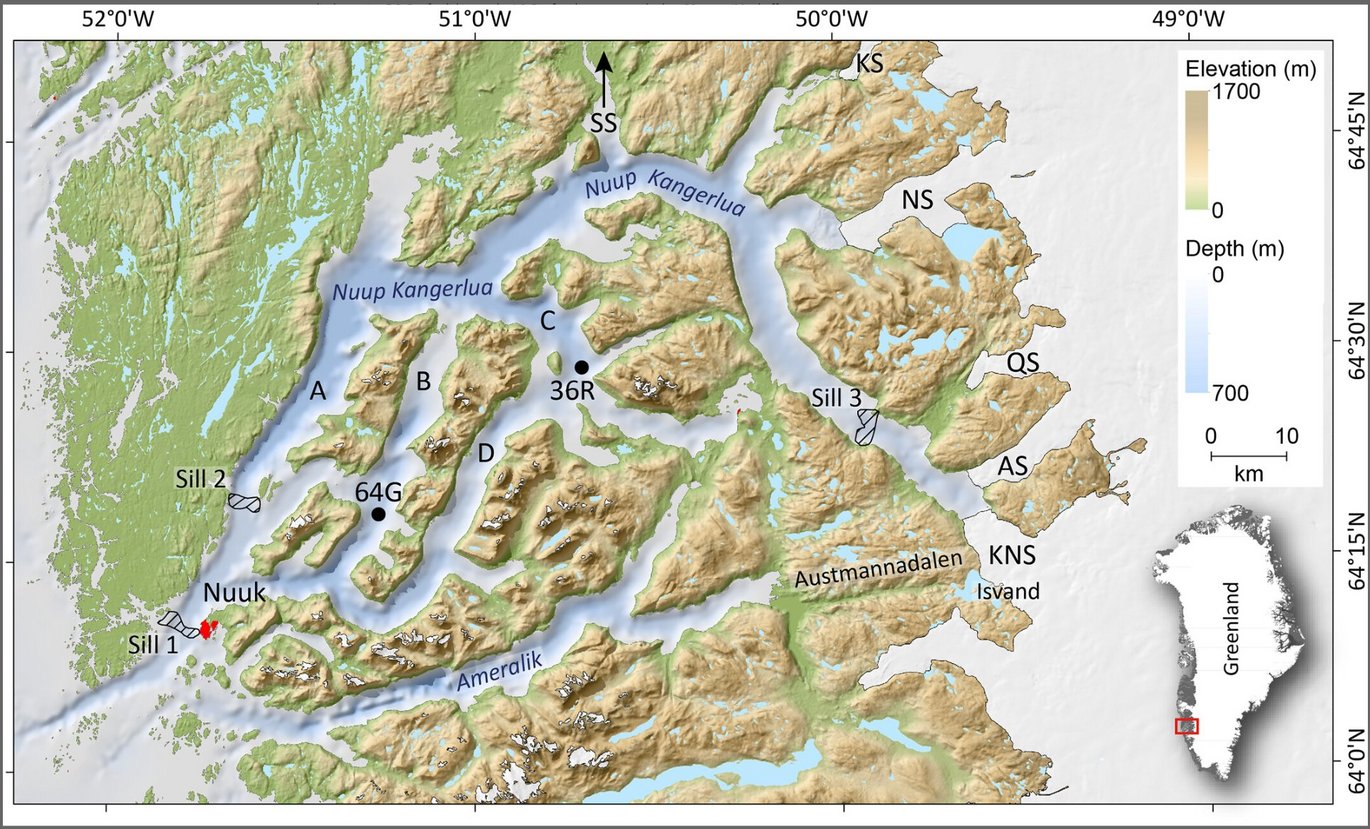Climate Variability and Glacier Dynamics Linked to Fjord Productivity Changes Over the Last ca. 3300 Years in Nuup Kangerlua, Southwest Greenland
New publication by M. Oksman, A. B. Kvorning, C. Pearce, N. J. Korsgaard, J. M. Lea, M. S. Seidenkrantz, S. Ribeiro.

Abstract:
Greenlandic fjords, located between the ice sheet and the ocean, are dynamic systems that can sustain highly variable levels of primary productivity and are sensitive to climate change. In our current climate trajectory, meltwater discharge is expected to significantly increase but its long-term effects on fjord productivity are still poorly constrained. Paleo-archives can offer valuable insights into long-term effects. Here, we present two marine sediment core records from Nuup Kangerlua, Southwest Greenland. Our goal is to better understand to what extent, and on what time-scales, climate fluctuations and associated glacier dynamic changes have impacted fjord productivity over the past ca. 3300 years. Our multiproxy records include diatom fluxes and assemblage composition, sediment biogeochemistry, and grain-size distribution. Our study reveals that fjord productivity is tightly linked to regional climate variability; relatively higher productivity levels coincided with mild climate periods whereas the climate cooling of the last millennium led to a decrease in productivity. The diatom records suggest that lower productivity is associated with shorter or less intense summer blooms, increased sea-ice cover and/or a stratified water column. Diatom assemblages demonstrate cold sea-surface conditions around 1600 CE that might be linked to local advance of glaciers. Cold conditions and decreasing productivity culminated at 1850 CE, when glaciers in the fjord retreated and high glacial meltwater discharge would have altered the fjord hydrography, likely leading to limited nutrient availability. Our long-term records support the idea that changing climate and cryosphere conditions have a non-linear impact on the productivity of Greenlandic fjords.
